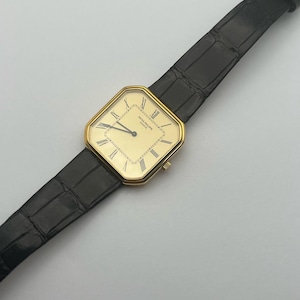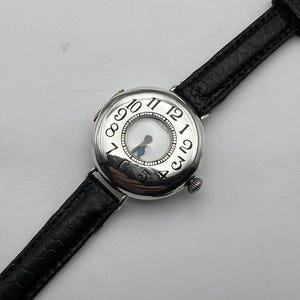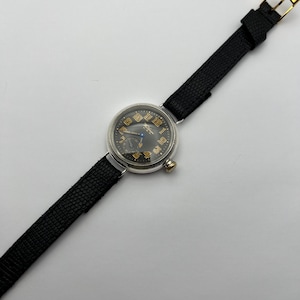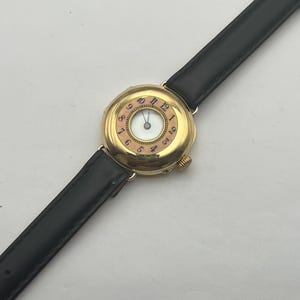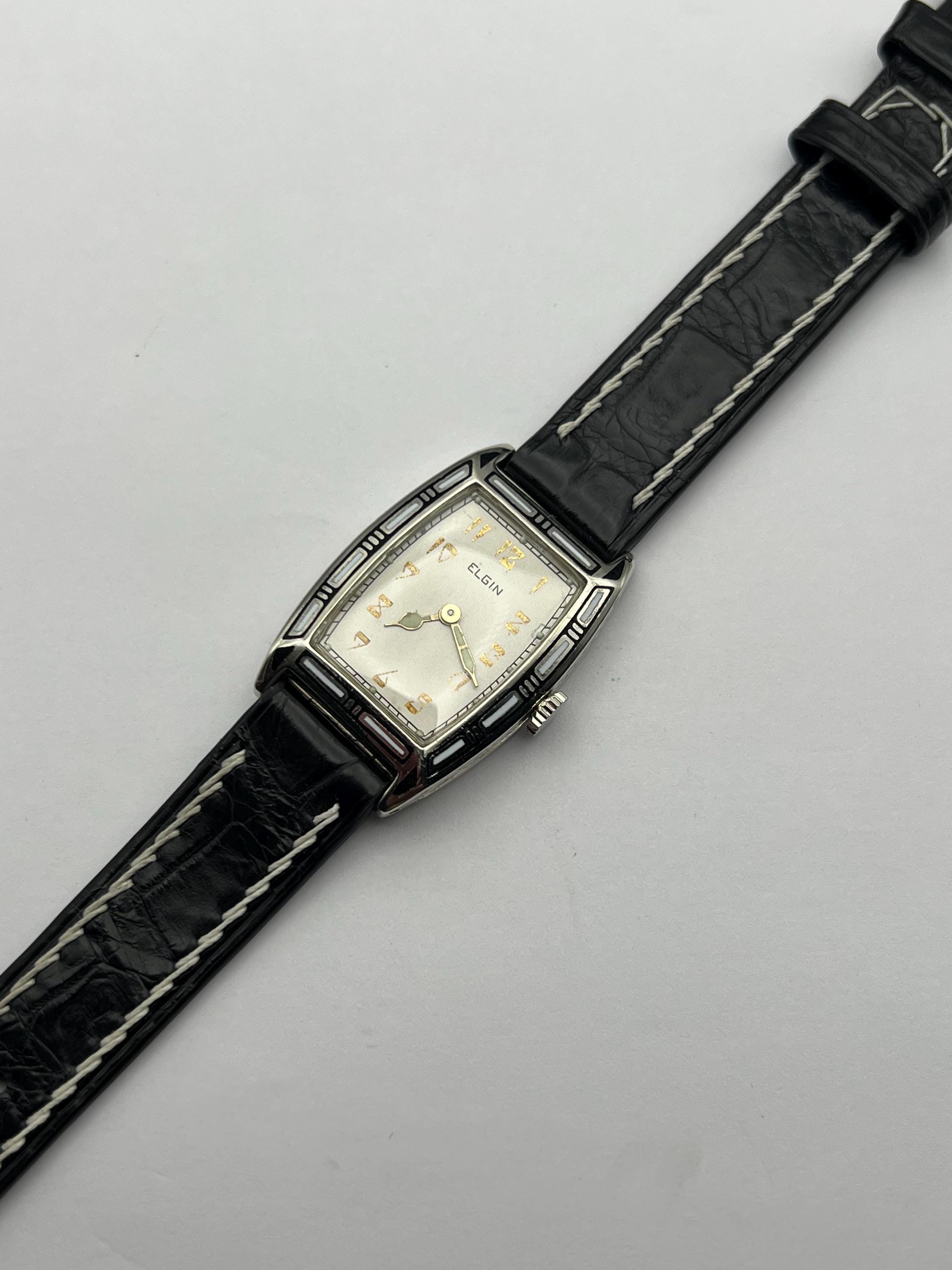
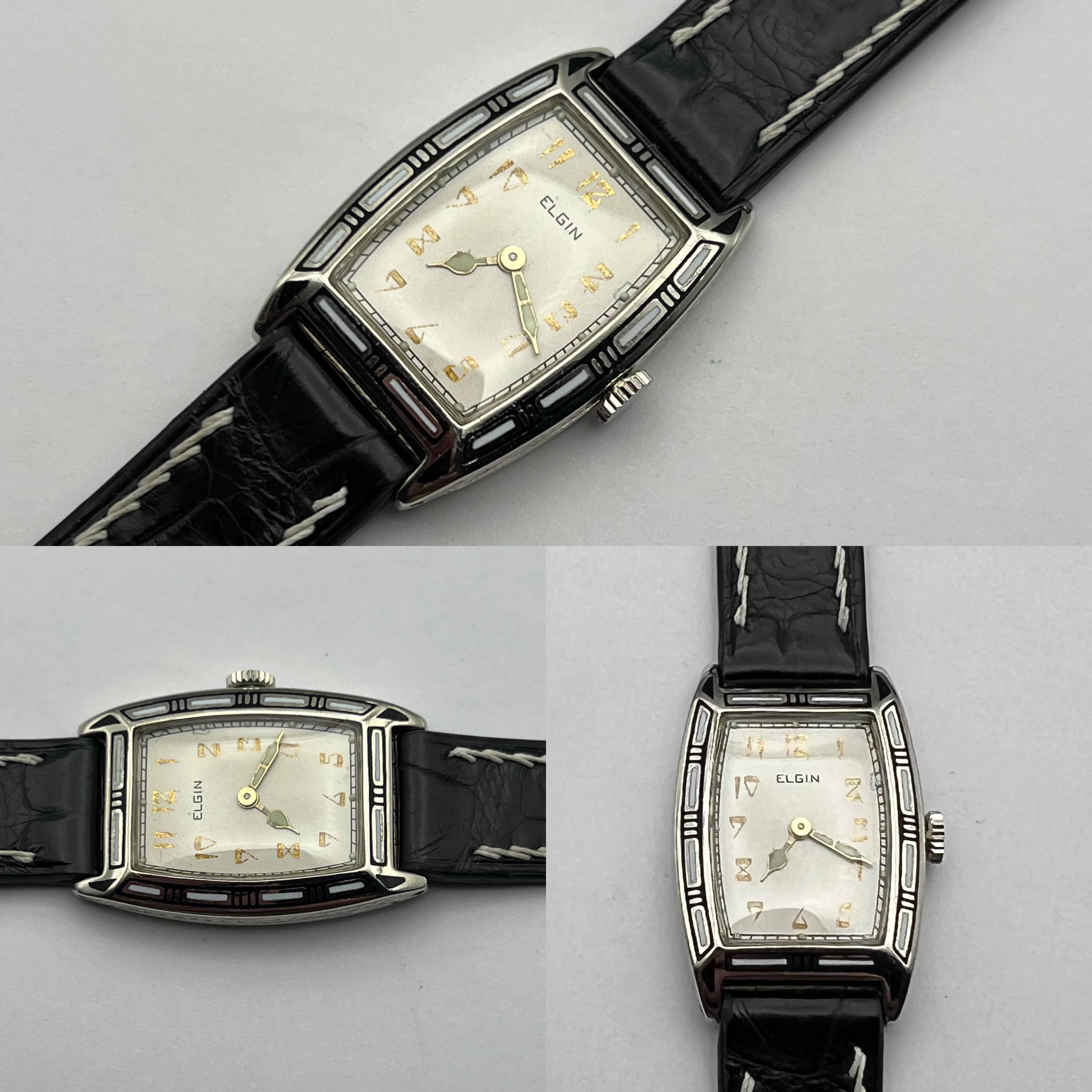
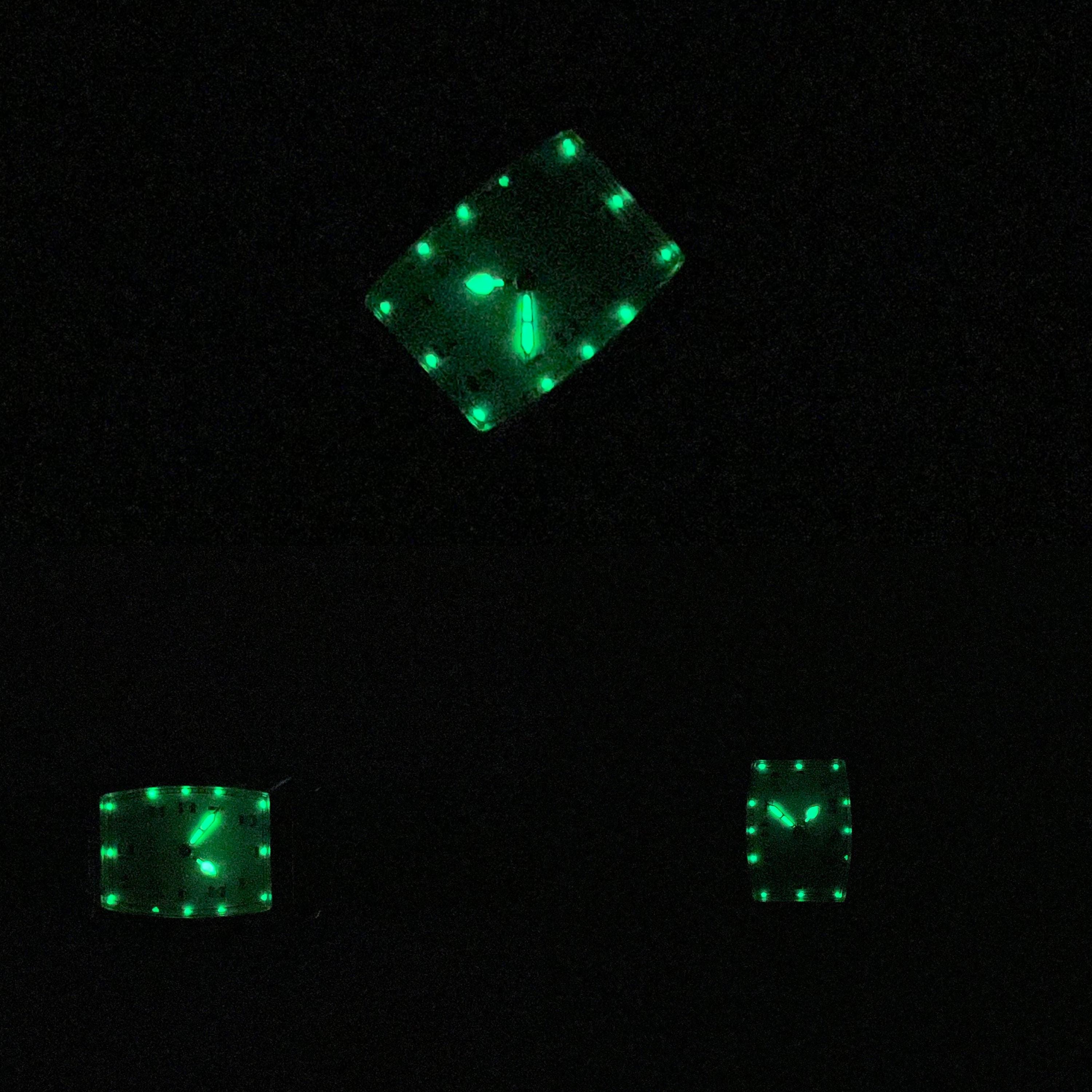
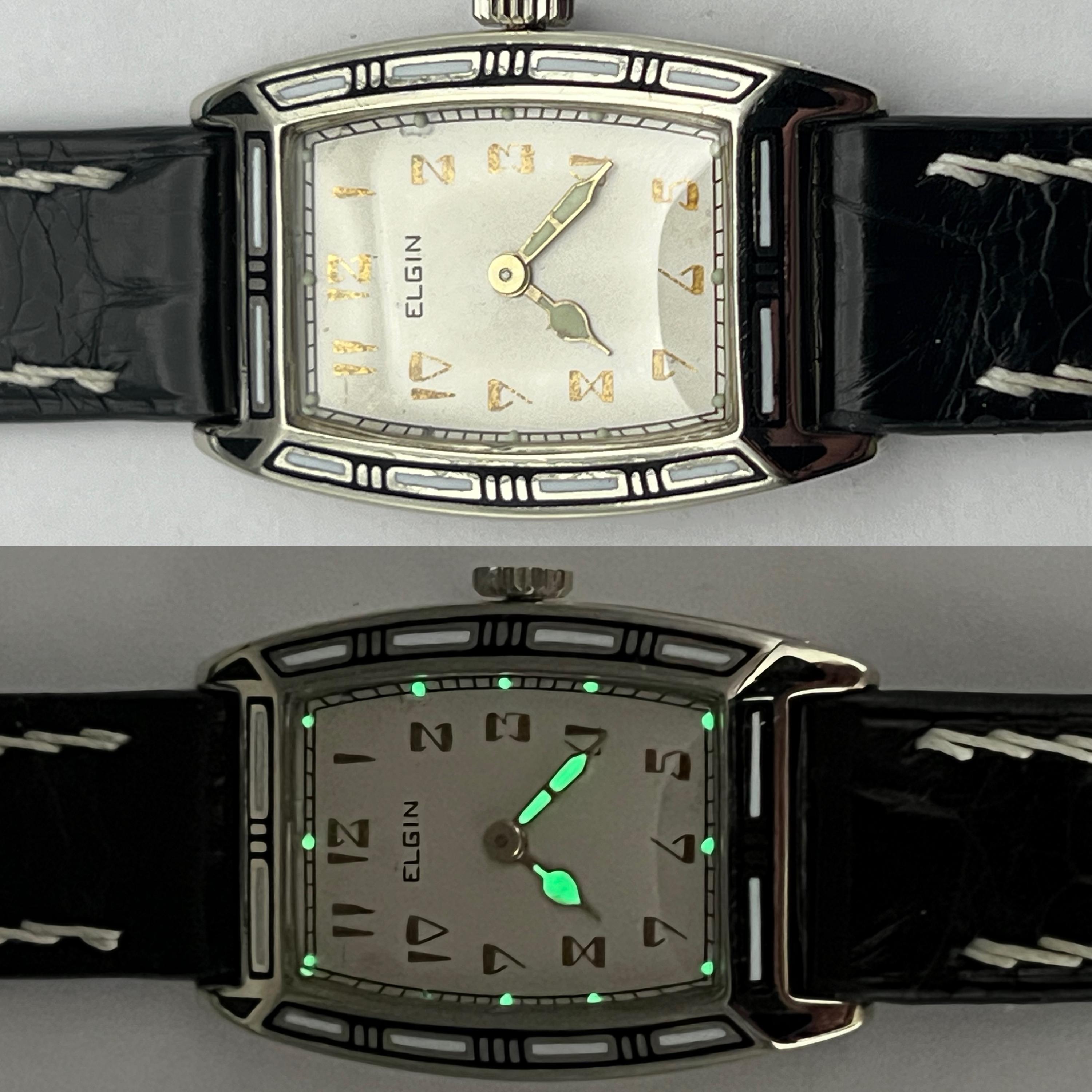
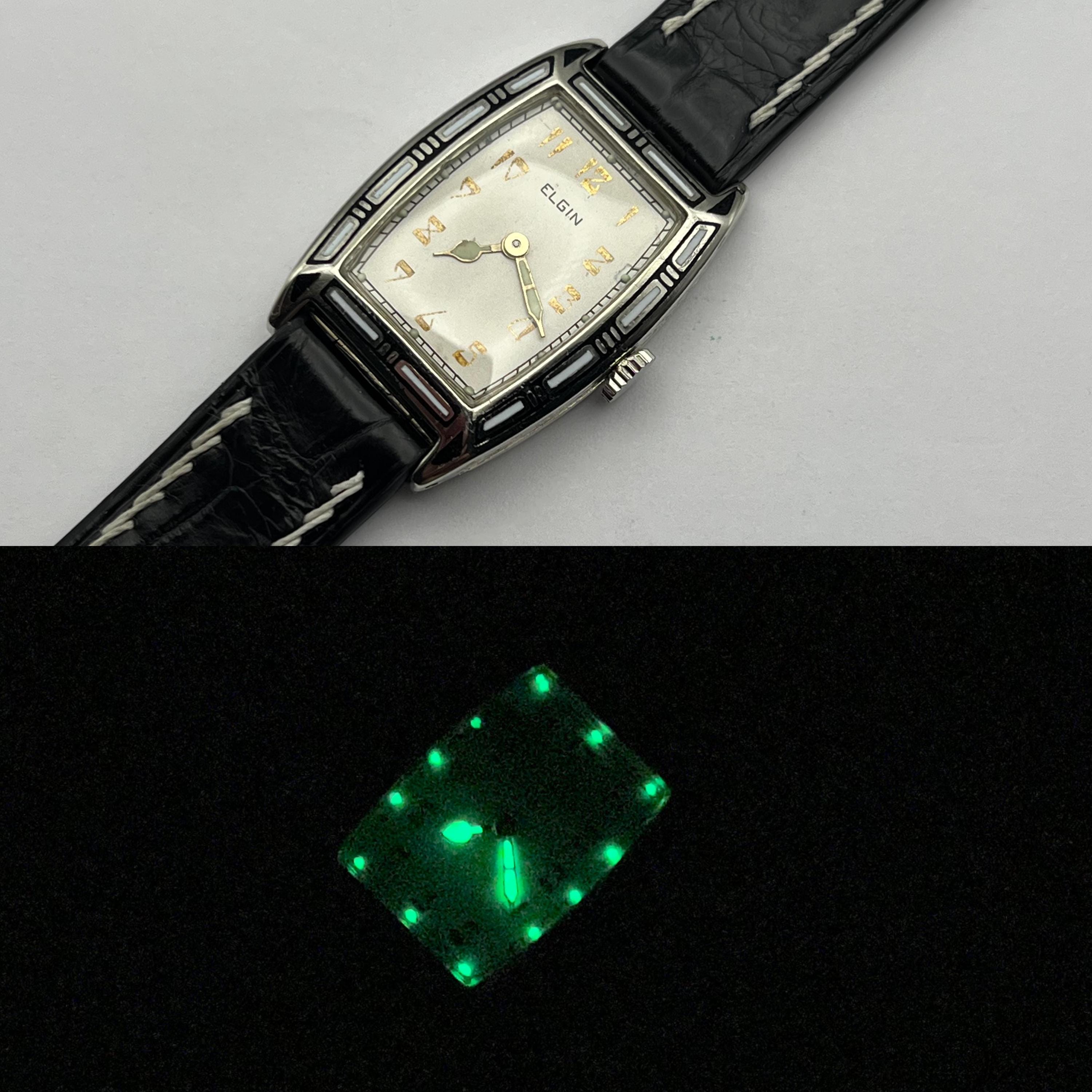
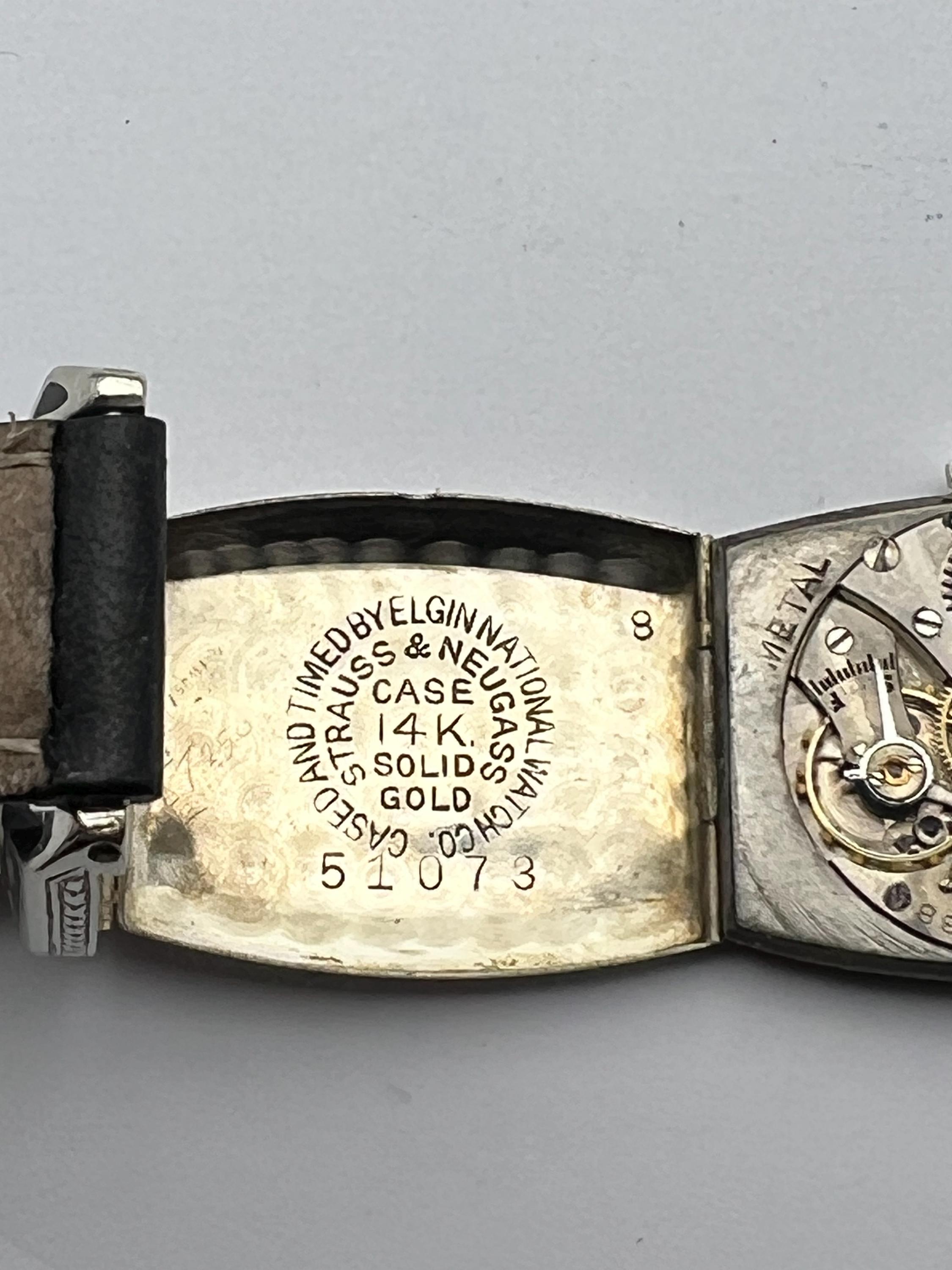
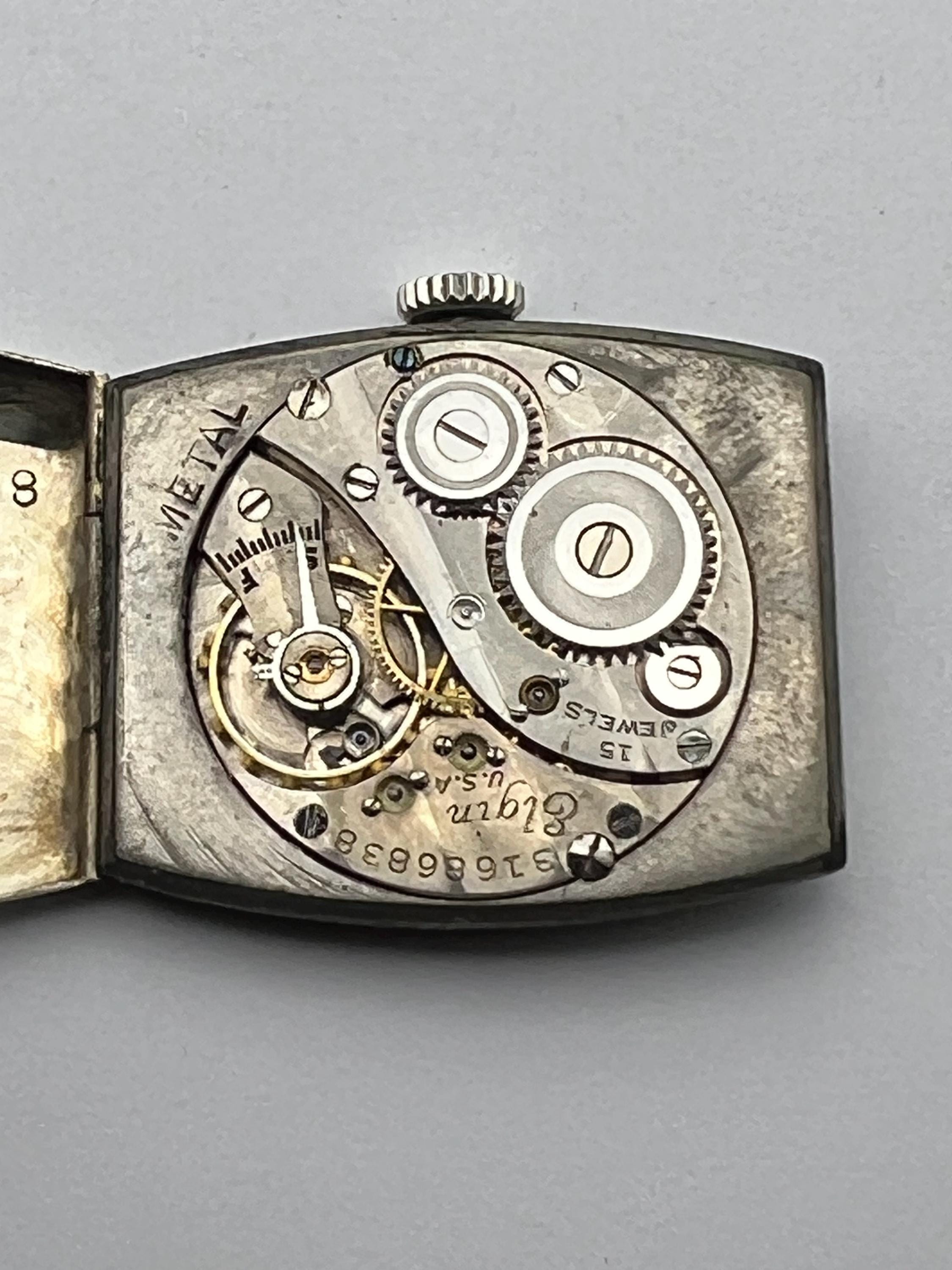
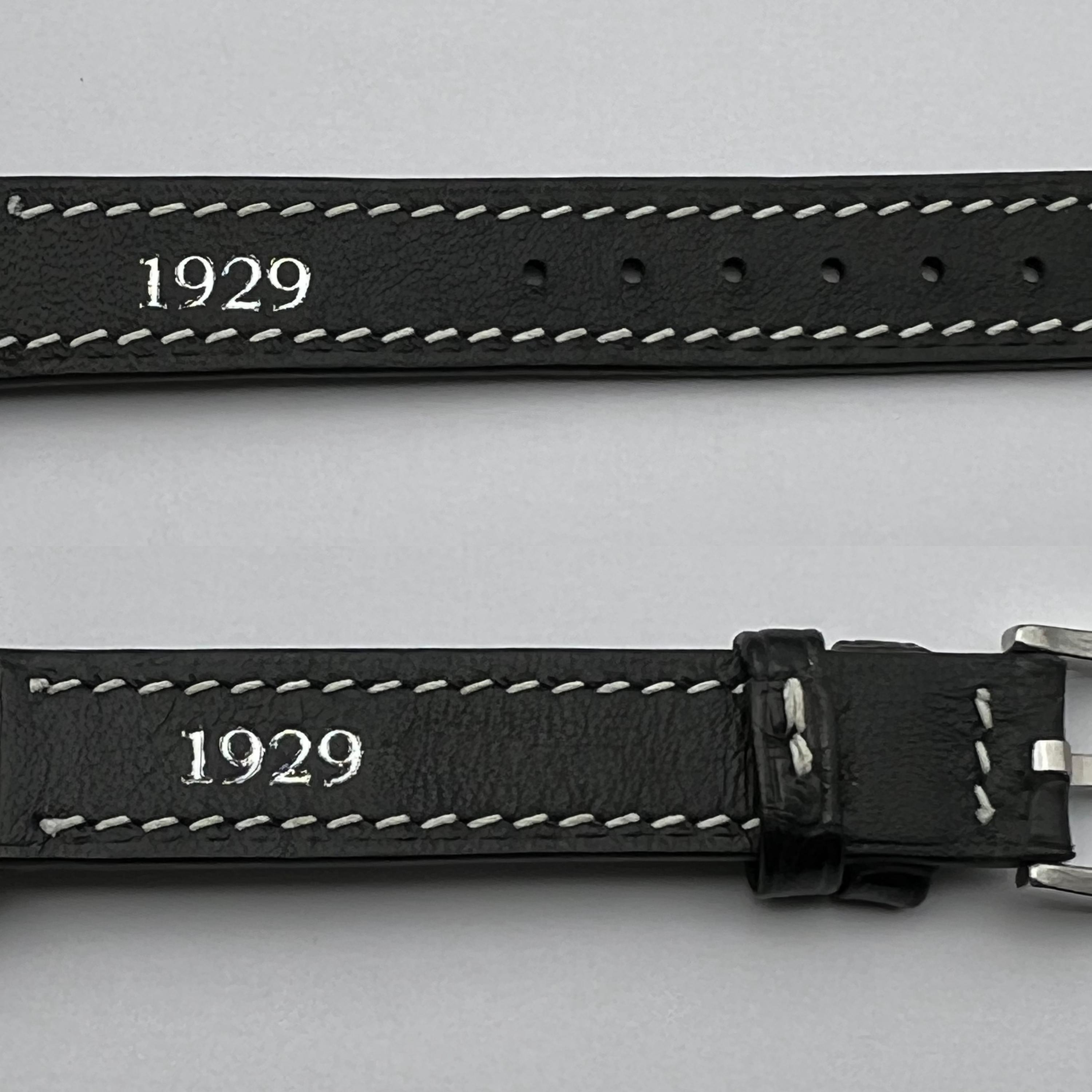
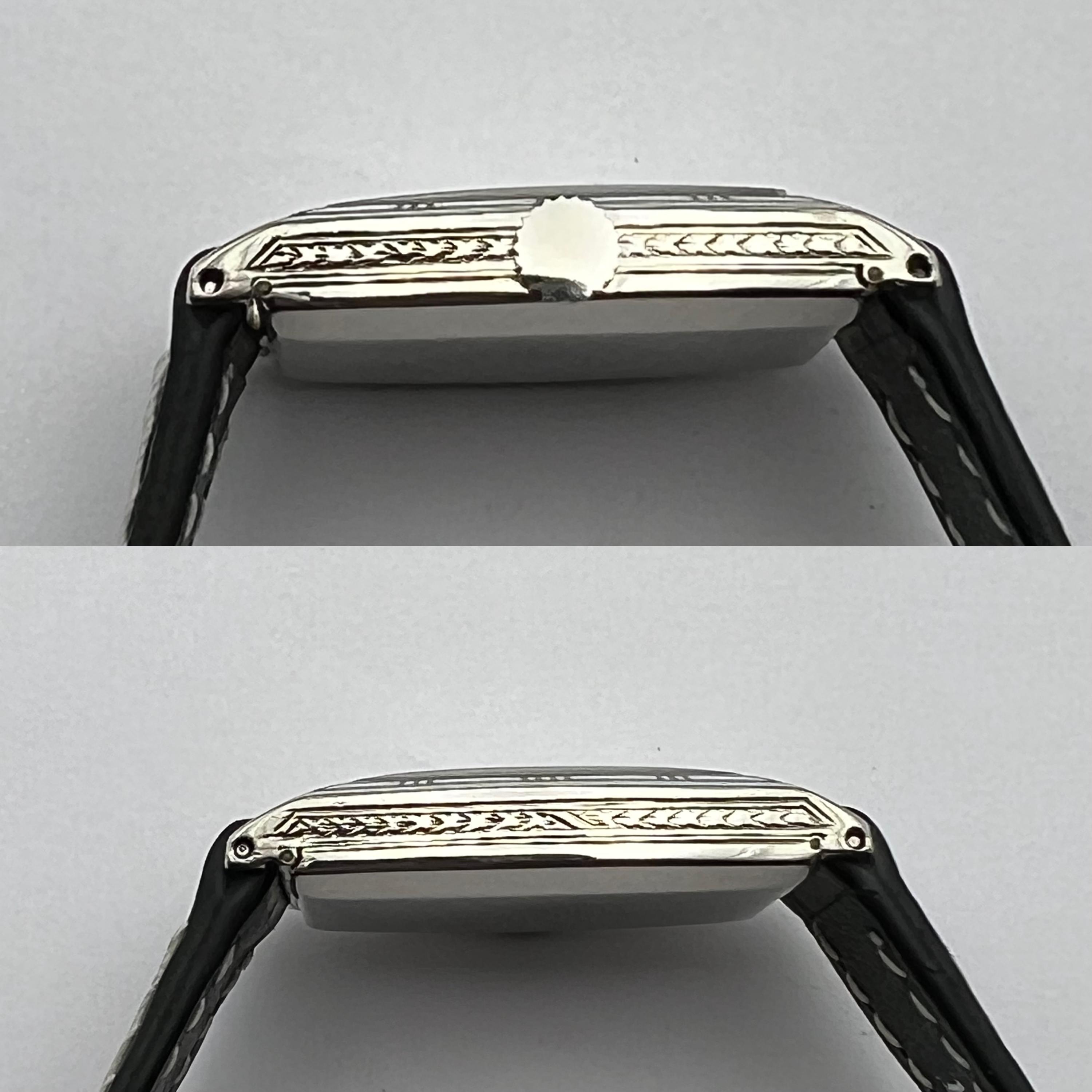
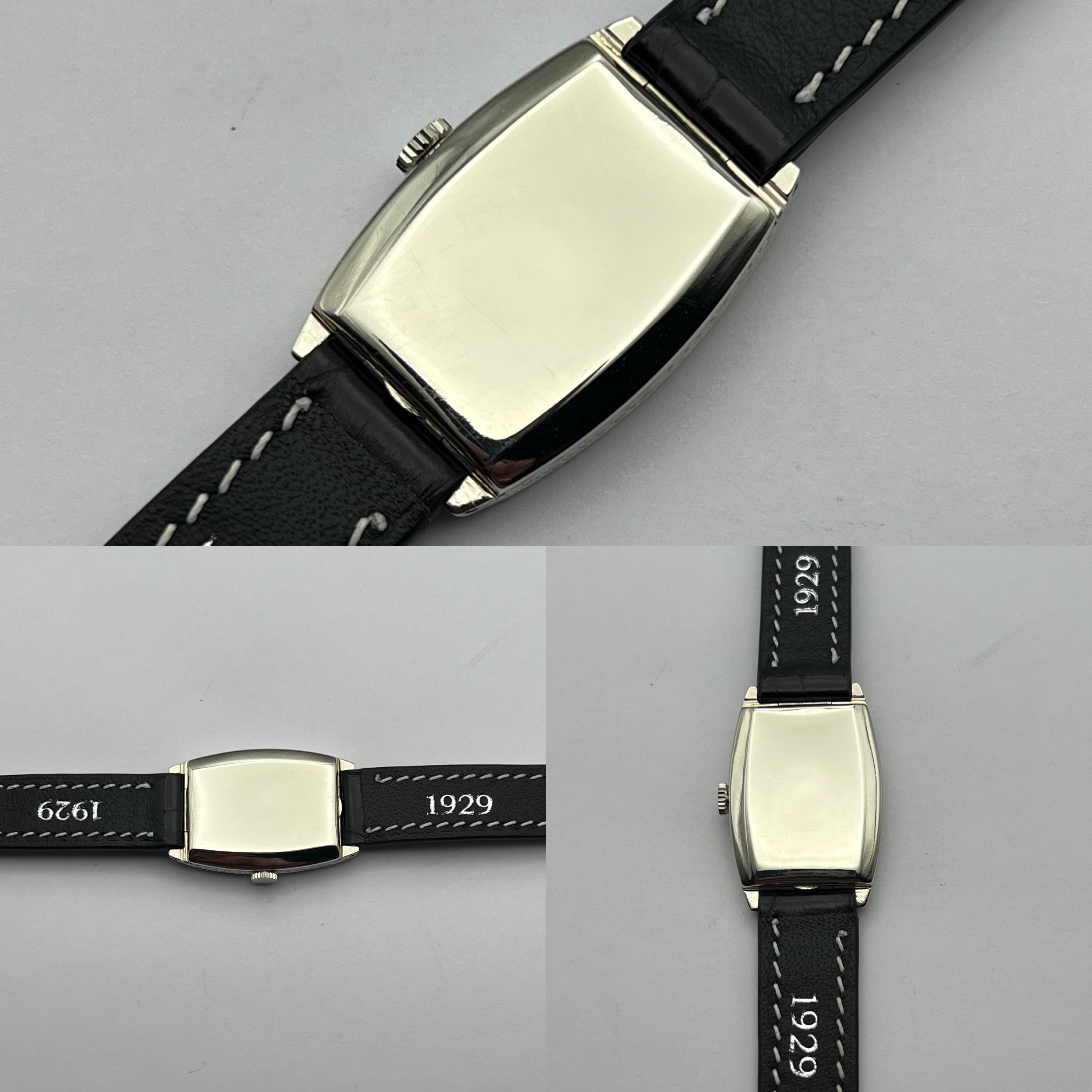
1929 Elgin 14 Karat White Gold, Model 210, Enamel Accents, Rare Model
$1,248.78 $1,601.00
-
DetailsThe Elgin Model 210: An Art Deco Treasure in White Gold
Among American wristwatches of the late 1920s, few embody the elegance and mystery of the Art Deco era quite like the Elgin Model 210. Produced in 1929—a year remembered for both cultural brilliance and devastating financial collapse—this elusive timepiece is as much a historical artifact as it is a design masterpiece.
Rarity and Specifications
The Model 210 is a difficult watch to source, even for seasoned collectors. This particular example features:
• 14k White Gold Case, measuring 24mm wide by 35mm long
• White and Black Enamel Inlays, carefully set into the bezel
• A rare tonneau hinged case, designed and manufactured by Strauss & Neugass, one of the little-known but highly skilled case makers of the Art Deco period
• A correct and original Elgin Caliber 444, 15-jewel movement
Strauss & Neugass cases are seldom acknowledged in horological literature, yet their contribution to the aesthetic richness of the period was significant. For collectors who look beyond the movement to appreciate the artistry of case design, this is a detail worth celebrating.
1929: A Year of Contrasts
The irony of this watch’s manufacture cannot be overlooked. It was introduced in 1929, the same year the U.S. stock market collapsed, plunging the country into the Great Depression. At a time when families struggled to hold on to basic necessities, Elgin released a wristwatch that epitomized sophistication, geometry, and glamour.
This juxtaposition—the brilliance of Art Deco style shining against a backdrop of financial darkness—heightens the significance of the Model 210. It is a reminder that beauty and progress often persist even in the hardest of times.
Art Deco Aesthetic
The Model 210 is a quintessential expression of Art Deco design. The bold black-and-white enamel inlays, coupled with the streamlined tonneau-shaped case, reflect the movement’s emphasis on geometric form and industrial elegance.
Elgin was one of several American watchmakers to embrace this design revolution. Names like Mermaid, Skyscraper, Lady and the Tiger, Avigo, and Oval stand among the brand’s celebrated Art Deco releases, but the Model 210 remains one of the least commonly encountered—and one of the most striking.
On Restoration
The question of restoration often divides collectors. Some believe any intervention erases originality; others argue that careful restoration brings new life to neglected treasures. For a watch like the Model 210, my philosophy is clear: while it may not be a “museum piece” of singular horological innovation, it is a low-production treasure that deserves to be appreciated in its full beauty.
The planned restoration will be ground-up: movement overhaul, case cleaning, enamel stabilization, and careful dial preservation. The goal is not to erase history but to allow the watch to speak again in the way it was intended nearly a century ago.
Legacy and Reflection
When I look at this watch, I think not only of the era it was born into but also of the generations ahead. Perhaps my grandchildren will one day hold it and appreciate its elegance, its mystery, and its story. Art Deco has always been more than a design language—it is a visual movement of progress, glamour, and quiet sophistication.
The Elgin Model 210 is, in every sense, a crown jewel among the ordinary. It is an American Art Deco treasure, one that bridges the past with the present and carries with it the enduring reminder that even in the hardest times, beauty finds a way to endure. -
Shipping & Policies
Shipping from United States
Processing time
1-5 business days
Customs and import taxes
Buyers are responsible for any customs and import taxes that may apply. I'm not responsible for delays due to customs.
Payment Options
Returns & Exchanges
I gladly accept returns, exchanges, and cancellations
Just contact me within: 14 days of delivery
Ship items back to me within: 30 days of delivery
- Custom or personalized orders
- Perishable products (like food or flowers)
- Digital downloads
- Intimate items (for health/hygiene reasons)
- Items on sale
Conditions of return
Buyers are responsible for return shipping costs. If the item is not returned in its original condition, the buyer is responsible for any loss in value.
Questions about your order?
Please contact me if you have any problems with your order.
Frequently Asked Questions
Custom and personalized orders
I will review your requests and evaluate it for completion

